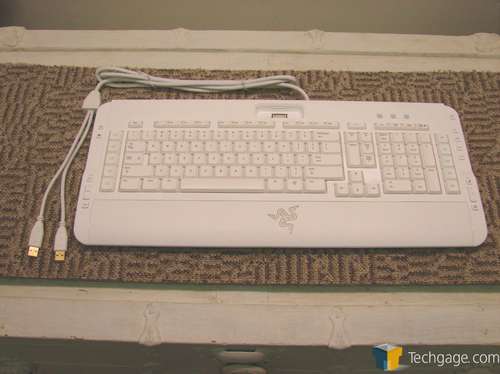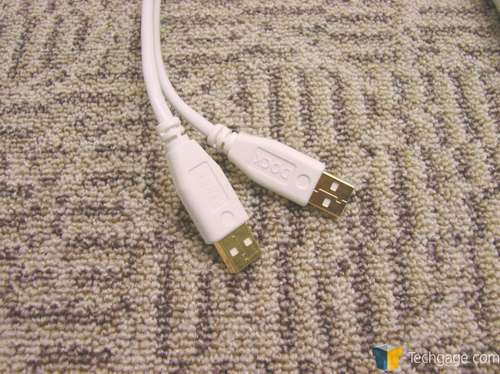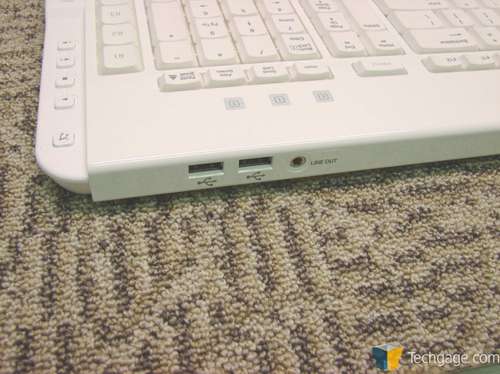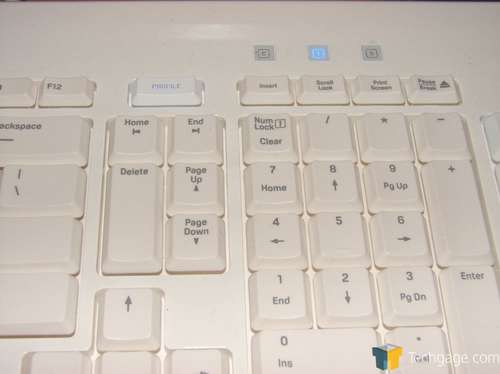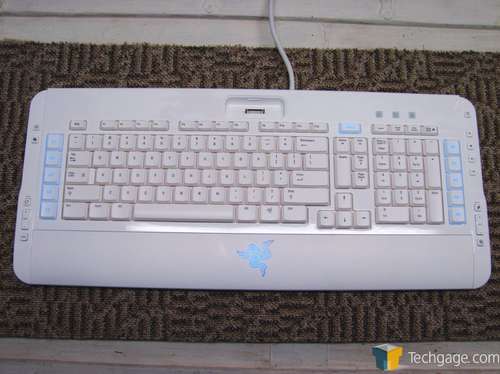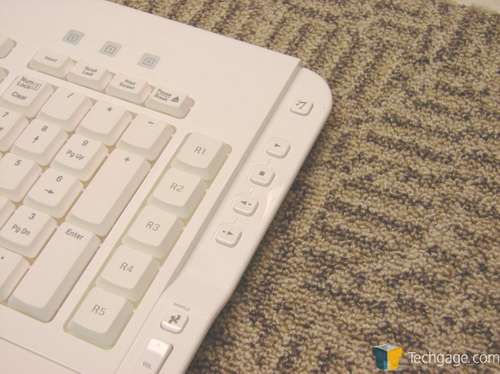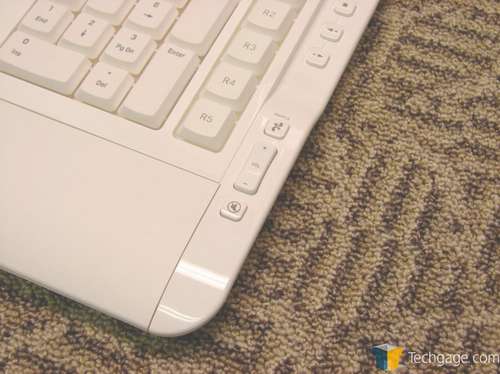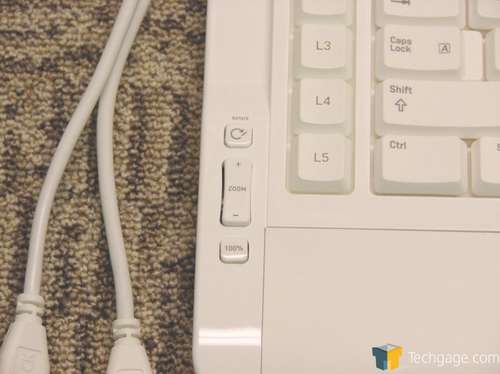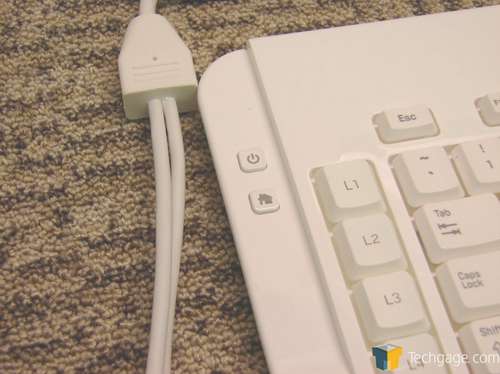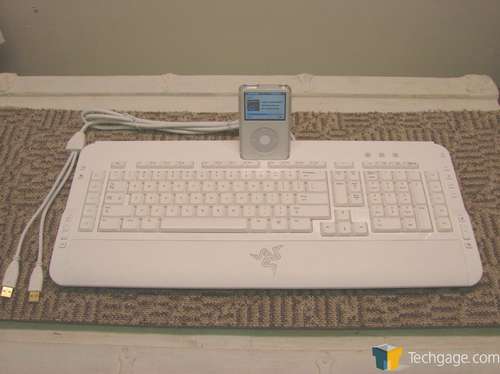- Qualcomm Launches Snapdragon 4 Gen 2 Mobile Platform
- AMD Launches Ryzen PRO 7000 Series Mobile & Desktop Platform
- Intel Launches Sleek Single-Slot Arc Pro A60 Workstation Graphics Card
- NVIDIA Announces Latest Ada Lovelace Additions: GeForce RTX 4060 Ti & RTX 4060
- Maxon Redshift With AMD Radeon GPU Rendering Support Now Available
Razer Pro Solutions Pro|Click v1.6 and Pro|Type
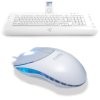
You know that Razer makes great gaming peripherals, but did you know they also produce products suited for the professional and stylish type? Today we are taking a look at their Pro|Click mouse and Pro|Type keyboard which both look great and function well.
Page 3 – Pro|Type Features
The Razer Pro|Type is the newer of the two Razer Pro Solutions products in this article, having been released on April 6th of this year, so I’ll take a look at it first. Overall, there’s little to differentiate this keyboard from the Razer Tarantula gaming keyboard, with the exception of the white color and the addition of an iPod docking connector in the center of the top span.
The Pro|Type keyboard’s cable will claim two of your USB ports – the extra USB connector is used for the iPod dock. The cable is thick and stiff up to the point where it splits into two cables, one for each of the gold-plated USB connectors. Between the Pro|Type and Pro|Click, the ensemble will claim three of your USB ports. However, the Pro|Type contains a two-port USB hub, allowing you to connect the Pro|Click mouse directly to the Pro|Type keyboard. The rear of the keyboard also contains a line-out jack for the iPod connector.
The Delete key on the Razer Pro|Type is oversized, and the entire Insert-Home-Pageup-Pagedown-Delete key group is rotated 90 degrees, allowing it to fit into a narrower space. To accomplish the double-sized delete key, the ‘insert’ key is moved up to the top right corner of the keyboard, with the Scroll Lock, Print Screen, and Pause keys. The Pro|Type also does without the second Windows key (labeled ‘Start’) , allowing the arrow keys to be shifted slightly to the left. The layout changes aim to improve the efficiency of the plank’s usage, but if you’ve got any critical gaming functions assigned to the Insert key or the Insert-Home-Pageup-Pagedown-Delete key group, you’ll want to be sure to revise those settings in your games.
The Pro|Type keyboard features the same blue illumination as the Tarantula keyboard, underneath both arrays of macro keys and the ‘Profile’ key, and under the Razer logo on the wrist-rest. The Razer logo lighting grows slowly brighter and then dimmer, for an effect which may have impressed bling-happy gamers in the case of the Tarantula keyboard, but is somewhat distracting in productivity settings.
The Caps Lock, Num Lock, and Scroll Lock lights all use blue LEDs as well. At night, this keyboard glows so brightly that it can light up the ceiling of a darkened room, and the illumination can make it difficult to read the non-illuminated keys in a low light condition.
The macro keys on each end of the keyboard can be programmable using the Razer-provided driver software, and independent sets of macros can be created for multiple programs. The illuminated “Profile†key cycles through the active profiles, though during use there isn’t any visual feedback on-screen to indicate which application’s profile is active.
The Pro|Type features the same combination of quick-access buttons as the Tarantula. On the left end of the keyboard are a Standby button, a button which opens the default web browser, and Rotate/Zoom buttons which may be useful in image editing programs. One button quickly returns the zoom level to 100%. On the right end of the keyboard are music player and volume controls.
The musical-note button automatically opens iTunes, if it is installed. The Play, Stop, Skip Back, and Forward Skip buttons work just fine in Windows Media Player, however. The ‘Shuffle’ button didn’t do anything in Windows Media Player, or the Windows version of iTunes. The Volume and Mute buttons retained proper functionality.
If we needed a dead giveaway that the Pro|Type keyboard is targeted mainly at Mac users, it’s the Pro|Type’s built-in docking station for an Apple iPod (though Windows users with iPods can also benefit), which is the first of its kind on a keyboard. This dock also charges the connected iPod, allowing this keyboard to completely replace the iPod’s included USB cable.
The iPod I used here was encased in a hard shell to prevent scratching, but the hard shell added significantly to the player’s size, meaning that I couldn’t use any of the provided dock inserts since they couldn’t accommodate the additional size. Removing the dock insert altogether allowed the dock to accommodate even the additional size of my iPod, hard case and all.
Next, we’ll take a closer look at the Razer Pro|Click v1.6.
|
|
Support our efforts! With ad revenue at an all-time low for written websites, we're relying more than ever on reader support to help us continue putting so much effort into this type of content. You can support us by becoming a Patron, or by using our Amazon shopping affiliate links listed through our articles. Thanks for your support!




